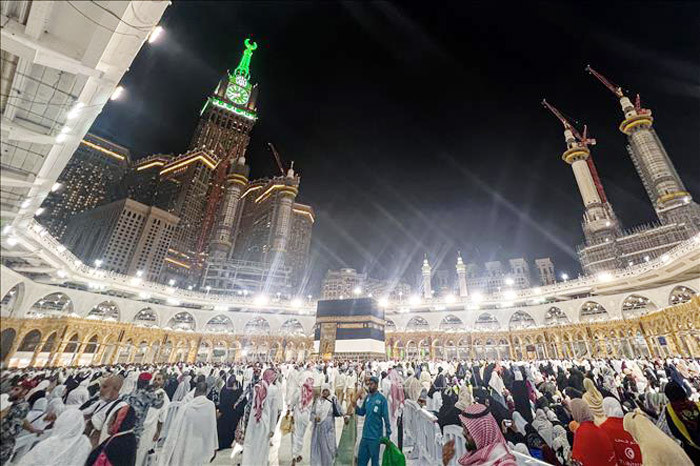On June 25, a large number of Muslims circled the Kaaba, the black cube in Mecca, as the Hajj, the largest pilgrimage in recent years, began in Saudi Arabia.

Muslims make pilgrimage to Mecca on June 22, 2023
The Hajj pilgrimage is one of the five pillars of Islam (belief, prayer, almsgiving, fasting, and pilgrimage to Mecca) that believers are obliged to complete at least once in their lifetime if they are able.
According to an unnamed official from the Ministry of Hajj and Umrah in Saudi Arabia, if everything goes according to plan, this year, the country will witness the largest Hajj pilgrimage since 2019, before the Covid-19 pandemic broke out. More than 2.5 million pilgrims from about 160 countries around the world are expected to participate in this event. As of the end of June 23, there were 1.6 million foreigners in Saudi Arabia alone.
The Hajj pilgrimage began early on June 25 with a procession around the black Kaaba, decorated with gold-plated details, where millions of Muslims pray every day. Later that evening, the pilgrims are expected to begin moving to Mina, about 5km from the Grand Mosque in the holy city of Mecca.
The heart of the Hajj is then the gathering on Mount Arafat, where the Prophet Mohammed is said to have delivered his final sermon. Worshippers will gather on the mountain and its surrounding area for hours of prayer and recitation of the Koran until evening.
At sunset, they will go to Muzdalifah to collect the stones, then return to Mina to perform the stoning ritual. After this ritual, the pilgrims will shave or cut their hair and perform the Eid al-Adha sacrifice, marking the end of the four-day Hajj in Mecca and its surrounding areas in western Saudi Arabia.
Previously, at the peak of the global Covid-19 outbreak, only 10,000 people were allowed to participate in the Hajj pilgrimage in 2020, then increased to nearly 59,000 people in 2021. Last year, the limit of 1 million people participating in this religious event was removed.
According to VNA